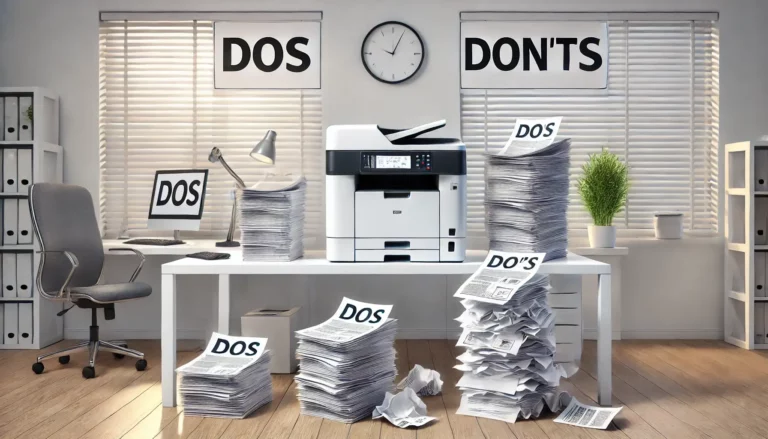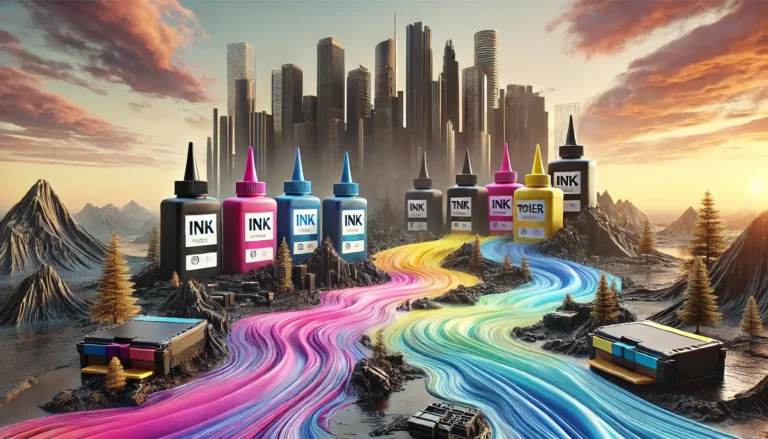Ink and toner are the largest ongoing expenses associated with owning a printer. The more you use the printer, the more often you’ll have to replace the cartridges. If you’re a heavy user, this could cost you hundreds of dollars every year.
Naturally, you’ll want to save as much as possible when buying ink cartridges. Many people buy third-party, refurbished, and refilled cartridges to help them save a bit of money. However, some don’t pay attention to the cartridge’s yield. Often, it’s the yield that will tell you if a cartridge is actually a good long-term investment that will save you money.
What Does Yield Mean?
A cartridge’s yield relates to the number of pages that the cartridge can print before it runs out of ink or toner.
Generally speaking, cartridges that can print more pages cost more than their standard yield equivalents.
What Yields Are Available?
Most makes and models of printer have several types of cartridge available for them. There are OEM (Original Equipment Manufacturer) cartridges. The printer’s manufacturer makes these types of cartridges. Then there are compatible cartridges, which are made by third parties but work for an array of makes and model of printer.
Once you’ve figured out which cartridges work for your printer, you can start looking at the yield. Generally, cartridges fall into one of three categories when it comes to yield:
- Standard Yield – This is the default cartridge for the printer and is usually the cheapest of the three. The manufacturer’s recommended OEM cartridge will usually be a standard yield cartridge. However, standard yield third-party cartridges may actually have a higher yield than standard OEM cartridges. It all depends on the manufacturer.
- High Yield – As the name suggests, high yield cartridges can print a larger number of pages than their standard equivalents. OEM cartridges usually come with some sort of lettering to distinguish their high yield cartridges from a standard yield cart. For example, a HP 902 standard cartridge becomes a HP 902XL high yield cartridge. Other manufacturers may use different letters, but the general naming convention remains the same.
- Extra High Yield – The rarest of the three cartridge types is also the most expensive. These cartridges can print even more pages than their high yield cousins. In some cases, they can print four or five times more pages than their standard equivalents. Extra high yield cartridges are popular in offices that see a lot of printer use over short periods of time.
You may think that more ink means a different cartridge size. But you’ll find that high yield cartridges look very similar to standard yield cartridges. They may have a little more bulk, but it won’t be so extreme that the cartridge won’t fit into your printer. This means you don’t have to worry about installation problems if you do decide to go for a higher yield.
Does a Higher Yield Mean Better Value?
This is where things start to get a little tricky. You’ll notice that high yield cartridges have higher price tags than standard yield cartridges. This leads to many opting for standard cartridges, especially if they’re not sure where the extra money actually goes. In most cases, the high yield cartridge would offer a better long-term investment.
But you can’t assume that’s always the case. For example, a high-yield third party cartridge may cost the same as an OEM cartridge, even though it prints fewer pages.
Thankfully, there’s an easy way to figure out the value of a cartridge – the CPP.
What is the CPP?
CPP stands for cost per page. It’s a calculation that you can use to figure out how much it costs to print a page using the cartridge that you’re considering buying.
It’s a simple equation:
Cartridge Cost / Yield = CPP
The lower the CPP, the more cost-effective the cartridge.
Let’s look at an example. You’re trying to choose between two cartridges. The standard yield cartridge costs $20 and has a yield of 400 pages. But there’s a high yield cartridge that costs $35 and has a yield of 1000 pages.
You can plug those figures into the CPP equation.
Standard Cartridge: 20 / 400 = $0.05 per page.
High Yield Cartridge: 35 / 1000 = $0.035 per page.
As you can see from this comparison, it costs 1.5 cents less per page to print using the high-yield cartridge than it does to print using the standard yield cartridge.
Now, let’s assume you print 400 pages. That brings you to the limit with your standard yield cartridge, which means you’ve spent $20 on those pages.
But if you used the high yield cartridge, those same 400 pages would have cost you $14. That’s a $6 saving.
As a result, the high-yield cartridge actually saves you money over the course of the cartridge’s life. By the time you’ve hit the 1000 page mark, you’ll have saved $15 with the high yield cartridge.
Of course, you can’t assume that a high yield cartridge will always save you money. If the high yield cartridge in our example had a yield of less than 700 pages, it would actually cost more to use it than the standard cartridge.
How Do I Find the Yield?
In most cases, the manufacturer will specify a cartridge’s yield on its packaging. All you have to do then is plug the numbers into the equation to figure out the CPP.
However, some manufacturers don’t do this. In their cases, you may have to research the yield online before you can figure out which is best for you.
What Other Factors Are at Play?
Unfortunately, a cartridge’s yield isn’t always an accurate representation of how many pages it will actually print. In fact, a single page in terms of yield usually means 5% coverage.
This means that the cartridge covers 5% of the page with ink, which equals one page of the yield.
Generally speaking, 5% covers a little over a third of a page of written text. As a result, a cartridge with a page yield of 1000 may actually only print about 350 full pages of text. This falls even more if you print solid blocks of color regularly.
This doesn’t invalidate the CPP method mentioned above. A cartridge with a high yield and low price will still produce a good CPP, even if you adjust for the 5% coverage. But it’s something to keep in mind when you’re buying.
Which Should I Buy?
It depends on how much you use your printer. Though high yield cartridges tend to have better CPPs, that’s of no use to you if you barely use your printer. In those cases, a standard yield cartridge represents a better investment because you’re spending less upfront and don’t really need the benefits of lower costs over time.
Those who print at high volumes will benefit much more from a high-yield cartridge with a low CPP. In those cases, the initial higher cost of the cartridge gets swallowed up by the savings you’re making per printed page.
Our advice is to think about how much you print. As a general rule, the more you print, the more valuable high yield cartridges become to you. Of course, our catalog has both standard and high yield cartridges for most makes and models of printer. Come to us if you want to save as much as possible on your ink and toner.


